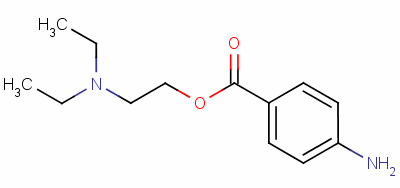Home > Offer to Sell > Petrochemicals > Others > 99.5% Purity Local Anesthetic Drug Procaine 59-46-1
99.5% Purity Local Anesthetic Drug Procaine 59-46-1
Inquiry
| Post Date: | Sep 30,2017 |
| Expiry Date: | Mar 29,2018 |
| Detailed Description: |
Cas No. :59-46-1
Quantity: 500Kilograms Specs:200-426-9 Price:20 USD Kilograms Payment Method: west union money gram T/T 99.5% Purity Local Anesthetic Drug Procaine 59-46-1 Procaine Procaine CAS: 59-46-1 Procaine MF: C13H20N2O2 Procaine MW: 236.31 Procaine EINECS: 200-426-9 Procaine Description: Procaine is a local anesthetic drug of the amino ester group. It is used primarily to reduce the pain of intramuscular injection of penicillin, and it is also used in dentistry. Owing to the ubiquity of the trade name Novocain, in some regions procaine is referred to generically as Procaine. It acts mainly by being a sodium channel blocker.Today it is used therapeutically in some countries due to its sympatholytic, anti-inflammatory, perfusion enhancing, and mood enhancing effects. Procaine was first synthesized in 1905, shortly after amylocaine. It was created by the German chemist Alfred Einhorn who gave the chemical the trade name Procaine, from the Latin nov- (meaning new) and -caine, a common ending for alkaloids used as anesthetics. It was introduced into medical use by surgeon Heinrich Braun. Prior to the discovery of amylocaine and procaine, was the most commonly used local anesthetic.[citation needed] Einhorn wished his new discovery to be used for amputations, but surgeons preferred general anesthetic. Dentists, however, found it very useful. Einhorn was displeased by this[why?] and spent many years touring dental schools to advise them not to use it. Procaine Usage: Procaine is a kind of local anesthetics. With low toxicity but quick and safe effects, procaine is suitable for local anesthesia, applied to the eye, ear, nose, teeth and other department operation, used for infiltration anesthesia, anesthesia and closed therapy supervisor. Procaine is also used in the production of procaine penicillin. 99% Procaine HCl 51-05-8 Procaine Hydrochloride Product name: Procaine hydrochloride Synonyms: 2-(Diethylamino)ethyl 4-aminobenzoate; Procaine Hcl; ATOXICAINE; Procaine HCl CAS.No: 51-05-8 Procaine HCl M.F.: C13H21ClN2O2 Procaine HCl. M.W.: 272.771 Procaine HCl Assay: 99% Procaine HCl Packing: 25kg/drum Procaine HCl Appearance: White crystalline powder Procaine HCl Usage: Local anesthetics, used for infiltration anesthesia, nerve block, etc. Procaine HCl Description and Application: Procaine HCl is a local anesthetic drug of the amino ester group. It is used primarily to reduce the pain of intramuscular injection of penicillin, and it is also used in dentistry. Owing to the ubiquity of the trade name Novocain, in some regions procaine is referred to generically as novocaine. It acts mainly by being a sodium channel blocker.Today it is used therapeutically in some countries due to its sympatholytic, anti-inflammatory, perfusion enhancing, and mood enhancing effects. Procaine HCl is indicated for the production of local or regional analgesia and anesthesia by local infiltration and peripheral nerve block techniques. Application of procaine leads to the depression of neuronal activity. The depression causes the nervous system to become hypersensitive producing restlessness and shaking, leading to minor to severe convulsions. Studies on animals have shown the use of procaine led to the increase of dopamine and serotonin levels in the brain.Other issues may occur because of varying individual tolerance to procaine dosage. Nervousness and dizziness can arise from the excitation of the central nervous system, which may lead to respiratory failure if overdosed. Procaine may also induce weakening of the myocardium leading to cardiac arrest. Procaine can also cause allergic reactions causing the individuals to have problems with breathing, rashes, and swelling. Allergic reactions to procaine are usually not in response to procaine itself, but to its metabolite PABA. About one in 3000 people have an atypical form of pseudocholinesterase,[citation needed] which does not hydrolyze ester anesthetics such as procaine, resulting in a prolonged period of high levels of the anesthetic in the blood and increased toxicity. Local Anesthetic Raw Powder Procainamide HCl |
| CAS Registry Number: | 59-46-1 |
| Synonyms: | ;2-diethylaminoethyl 4-aminobenzoate;novocaine;Procaine base; |
| Molecular Formula: | C13H20N2O2 |
| Molecular Weight: | 236.3101 |
| Molecular Structure: | 
|
| Company: | hubei gongchuang ltd.c [ China ] |
| Contact: | ulalee |
| Tel: | +86-571-15784251 |
| Fax: | |
| Email: | gcgj11@ycphar.com |
-
Disclaimer statement:The information and data included above have been realized by the enterprises and compiled by the staff, and are subject to change without notice to you. The Chemnet makes no warranties or representations whatsoever regarding the facticity, accuracy and validity of such information and data. In order to ensure your interest, we suggest you chose the products posted by our gold suppliers or VIP members.


